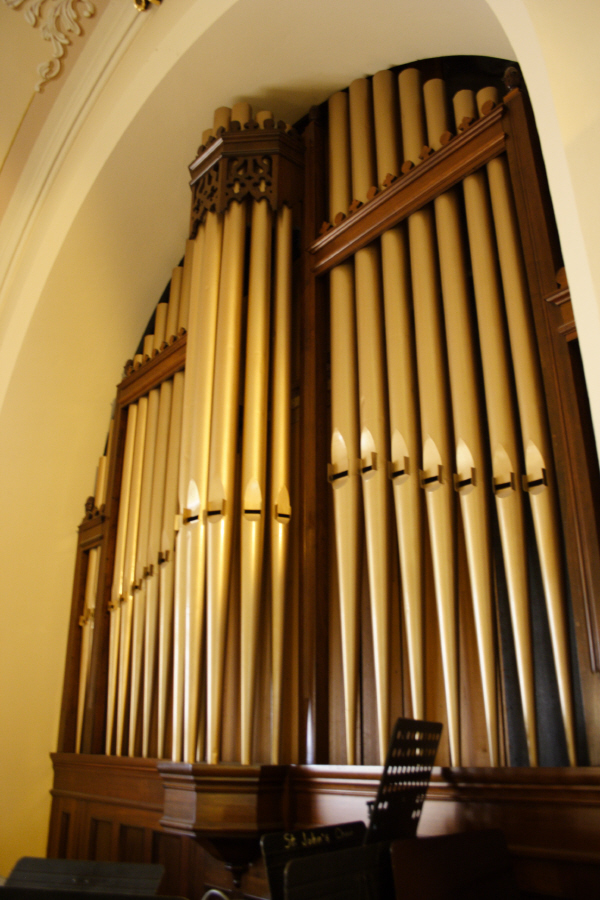Entering the Great Doors of St. John’s church your eyes are met with a feast of Romanesque Revival architecture and Classical religious design. When your eyes are full, sit for a moment and wait for the ethereal sounds of the nearly century old Moller organ to fill the silence with a joyful noise.
In 1929 St. John’s Church set out to replace its old, pipe organ with a new instrument. They chose to use the M.P. Moller Organ Company of Greencastle, Pennsylvania. The Company was founded in 1875 by Danish immigrant Mathias Peter Moller. The Company moved to Hagerstown, Maryland in 1881 and remained there until it closed in 1992. At its peak the M.P. Moller Organ Company employed hundreds and over its lifetime the company produced more than 12,000 instruments. Moller organs can also be seen in the Basilica of the National Shrine of the Immaculate Conception in Washington, D.C, St. Paul the Apostle Church in New York, in the Cadet Chapel of the United States Military Academy at West Point and at the Air Force Academy Cadet Chapel in Colorado.
The St. John’s Moller organ, a three manual, 27 rank M.P. Moller pipe organ was installed in the church in September 1929, replacing a pipe organ whose age and builder were unknown. It was originally installed as a single unit in the choir loft but the pastor did not like that it blocked the church’s beautiful rose window. In 1940 the organ was moved into two chambers on either side of the choir loft to reveal the rose window once more. In 1995 a three rank Mixture was added to the organ to enhance its romantic sound. In 1998 the original Moller console was replaced and the organ was totally rewired. The chimes were relocated to the Choir Division from the Sanctuary Division. And as there was no provision for the Sanctuary Division on the new console it was sealed and the air supply disconnected. The original console now resides in the Delphos Canal Museum in downtown Delphos.
According to Tom Densel of the Lima Pipe Organ Company in Elida, the organ has 1,949 pipes and 25 Chime tubes. The pipes range in size from over sixteen feet to less than the size of a pencil. There are 256 pipes that are no longer operational in the Sanctuary Division above the south sacristy. The large, gold pipes you see from the floor of the church are simply decorative. They are there to cover the actual, working pipes that are located behind them.
The pipes that produce the sound are contained in wooden boxes called swell boxes with shutters that are controlled by a foot pedal on the organ console. These pipes are considered under expression meaning the opening and closing of the shutters controls the volume of the pipes.
There are numerous “stops” on the original Moller console. Some are labeled flute, French horn, clarinet, tuba and chimes. Engaging these stop will produce sounds in the family of the instruments on those labels.
When the Moller organ was installed in 1929 a celebration was held in the church to dedicate the new organ. On September 16, Mr. Gerber, a Chicago organist and demonstrator for Moller organs, played ten selections. The St. John’s men’s and boys’ choirs performed, both under the direction of Mrs. R.H. Jettinghoff with accompaniment by Helen Stallkamp. Also performing were Rev. Father Marlborough, tenor from Toledo, Anna Roberts Davis, soprano of Gomer and Delphos natives Eugene Lindeman, baritone from Toledo and John Wulfhorst, baritone from Cleveland. Rt. Rev. Samuel Stritch from Toledo gave the sermon. Tickets were reserved seat only and the church was filled to capacity.
Thank you to Lynn Bockey and Tom Densel for providing information for this article.
















Speak Your Mind